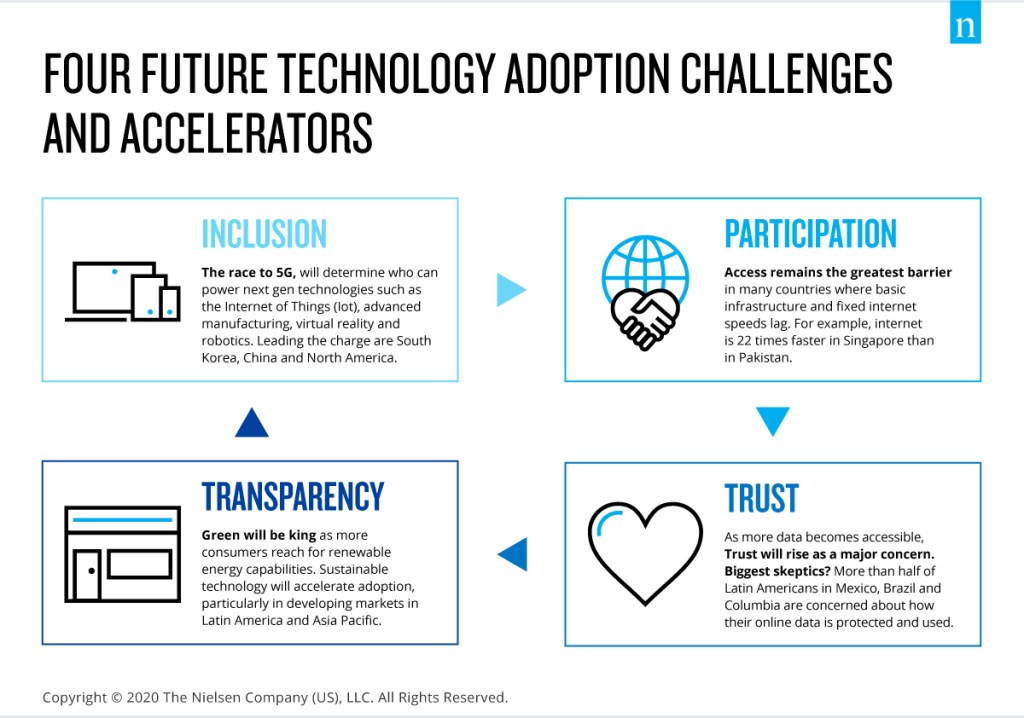Four areas of tech-transformed consumption
75% of consumers believe technology can provide solutions to help simplify their lives.
Amplified retail: Online grocery shopping penetration could increase by a further 20% (willing to use) to 87% in the next two years.
Emerging Technology: Consumers are wary of payment technology and are unwilling to transact via implanted microchip (35%) or digital/cryptocurrencies (37%).
Virtual Assistants: In 2019, smart speakers grew 82%, to 208 million globally, and 42% of consumers are willing to embrace assistants to auto-order products.
Augmented Reality: 51% of consumers are willing to use artificial/virtual reality (A/VR) technology to assess products.
Prepare for the next wave of technology
In the near term, consumers will continue to adopt and embrace online grocery shopping and convenience services. Additionally, seamless transacting services via automated payment services and mobile wallets will gain momentum. Most importantly, amplified retail experiences will become more common with the expansion of in-store navigation apps, electronic shelf beacons, and automated checkout.
These building block technologies will set the stage for immersive, interactive, blended, and augmented retail and brand experiences, powered by artificial intelligence. We predict that A/VR will become the biggest disruptor of the consumer journey. Already, they tip the scale in their ability to entice consumer purchases, and consumers prefer using these applications over visiting physical stores to try out real products. Not only will A/VR continue to provide consumers with risk-free shopping, but it will enable them to receive highly personalized experiences that will completely transform how they can engage with brands.
Enabled by 5G and artificial intelligence, the internet of things (IoT) will step out of infancy as virtual assistants advance from passive to predictive to carry out tasks that are more complicated than the ones they can execute today.
Meanwhile, we see regulatory, logistical, and ethical hurdles ahead for some delivery, driving, and payment technologies such as drones, autonomous cars, 3D printing, implanted microchips, and crypto-currencies.
Understand what drives technology adoption
The path of disruption and rate of adoption will vary around the world based on regional- and country-specific infrastructure, technology enablers, and experiential drivers. Once momentum picks up, the way we shop will be forever changed.




